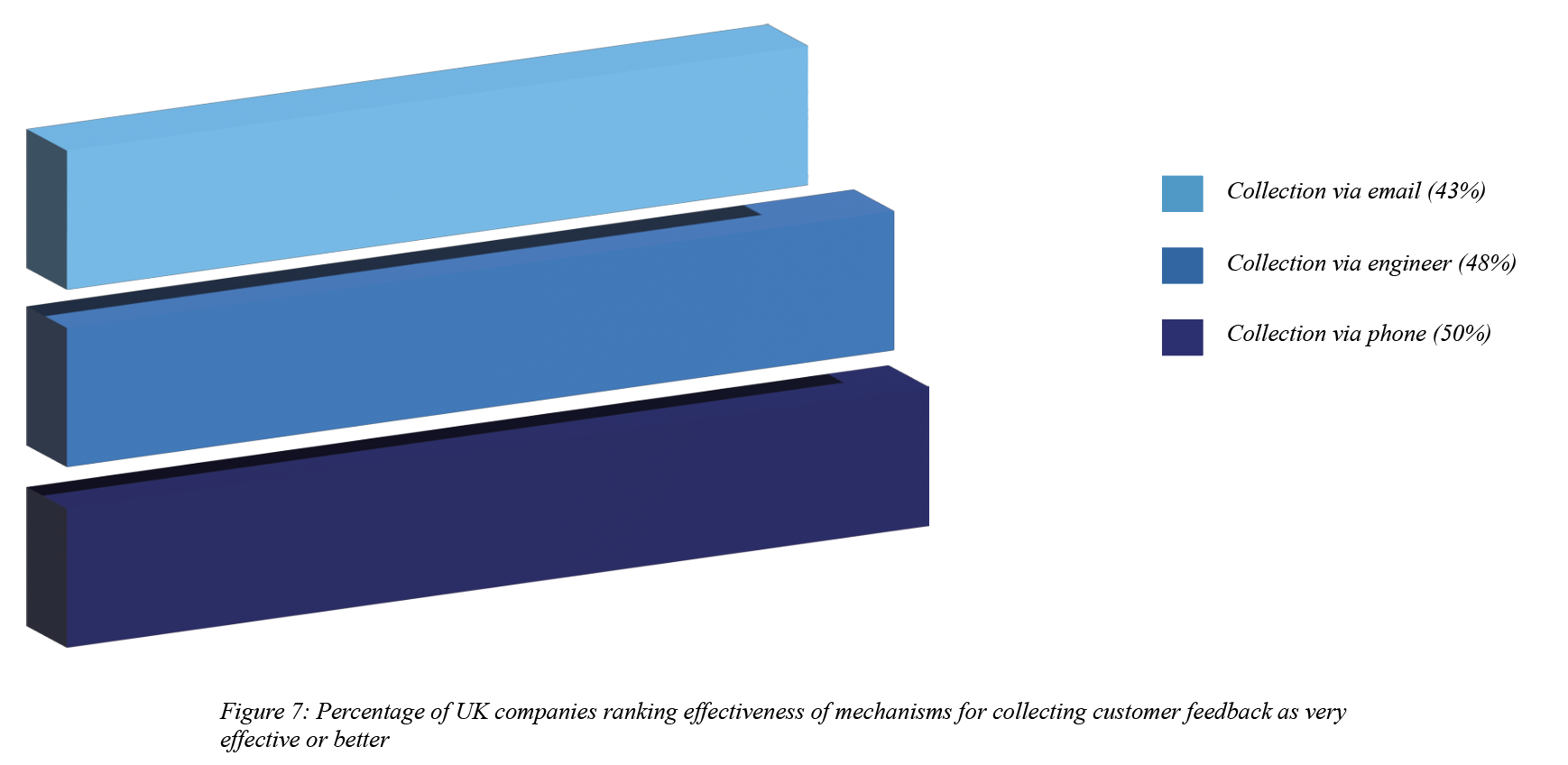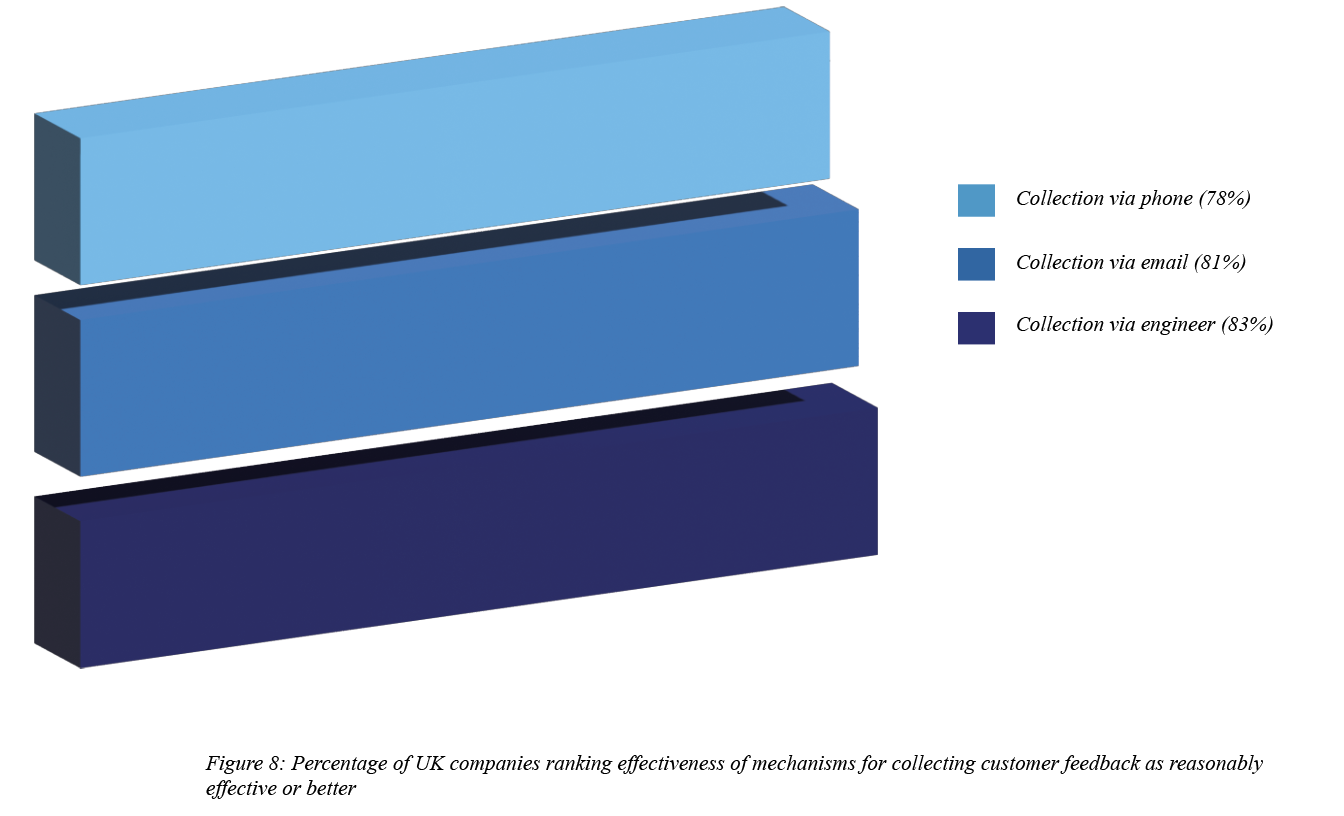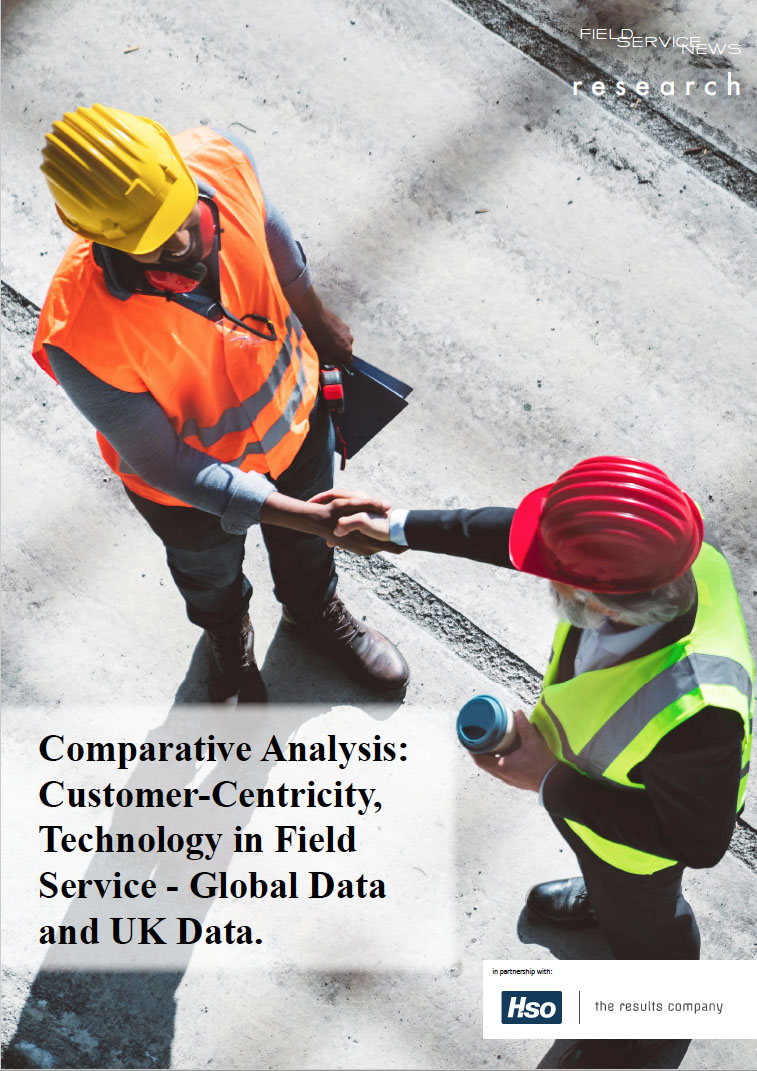How & When Customer Feedback is Collected
In the next in our series of comparative analyses across a global study and a follow-up UK study hosted by Field Service News Research in partnership with HSO, we look at trends relating to how field service companies are collecting customer feedback.
Having looked at the tools used for capturing CSAT data in the previous segments of our reporting on these studies, the next area of focus, an equally important element within this equation is when such data should be collected.
In the previous set of questions across both studies, we saw apparent trends emerging in that most companies were using standard methodologies to collect their CSAT data (NPS, Customer surveys, Management feedback), there was a much smaller leading-edge group of companies that were using more sophisticated tools (sentiment analysis and social media monitoring).
However, when it comes to when is the best timing is for collecting customer feedback data, in the original global study there was far less industry consensus.
We asked our respondents to identify when they most frequently collect customer feedback, providing them with four options.
These were:
- Engineer collects feedback directly while on visit
- Request sent to the customer within 24 hours of visit
- Request sent to the customer after 24 hours of visit
- We don’t specifically seek customer feedback
Surprisingly in the original study, almost a fifth of companies (18%) stated that they don’t specifically seek customer feedback. In the light of the earlier findings of this study, we anticipate that this will be a diminishing number across the coming years. However, we concluded in our first report that this was noticeably high. Amongst, UK respondents within the second study this figure is even higher at over a third of companies (34%). We could hypothesise that this could be the result of more automation that may be inferred from the findings of the previous section – however it is a finding within the study that is unexpected and will be further investigated in follow up interviews.
Reflecting back on the original study, when identifying the best time to seek customer feedback, the results were fairly evenly split.
The most widely cited response was a request being sent to the customer within 24 hours of the service visit identified by 29% of respondents. However, the engineer collecting feedback directly from the customer was only narrowly behind this cited by 28% of companies. Finally, a request being sent to the customer after 24 hours was also in a similar ballpark in terms of citations, with 24% of companies stating this is when they most frequently collect customer feedback.
The split across these three options within the UK response set was also similarly split. (fig 5. below).

In the UK study, we saw a request being sent to the customer within 24 hours of the service visit again being the most widely identified response cited by 26% of respondents. The second most widely cited response amongst this group was ‘a request being sent to the customer after 24 hours ‘ which was cited by 22%.
Interestingly, less than a fifth (18%) of field service companies within the UK study utilised their field service engineers for data collection. Could this perhaps be a societal trend – a reflection of the more rigid interpersonal boundaries amongst the UK populace?
Again it is a question that needs further investigation within follow up interviews, however, it is an interesting reminder that when dealing with human interactions and data collection, there may well be geographically related cultural differences that mean a one size-fits-all approach to success may not be applicable.
However, even when we look at the macro trends – there are, of course, benefits and downsides to each of these approaches, hence why we perhaps see such an even spread within the data.
For example, while direct collection from the engineer is perhaps the most effective means of collecting data, the results are potentially skewed as it may be uncomfortable for the customer to leave negative feedback around the service visit while the engineer is present. In the case of the UK, culturally this may be more pronounced than it is elsewhere in the world.
Similarly, as we outlined in the original report, a case could be made for requesting feedback within 24 hours, as the service call will be fresh in the customer’s mind. However, should the service prove unsuccessful a few days later, this data will also be inaccurate.
On the flip side, if data is collected more than 24 hours after the service visit, while a more complete picture of the total service experience may be captured the customer may have less recollection of other aspects of the service, such as timeliness of the engineer or other factors.
Indeed, it is a complicated issue to identify a best practice approach regarding timings, as the study findings show – but what about the most effective mechanisms for collecting the data? Here the global study began to reveal some insights into best practice.
We asked our respondents to rank the effectiveness of each of the following mechanisms for collecting customer feedback data from ‘extremely effective’ through four response options descending to ‘not effective’:
- Engineer request feedback directly in person (direct)
- SMS
- Phone
Of those field service companies that utilised email, direct and phone, most companies scored these measures as ‘very effective’ or ‘extremely effective’.
The highest-ranked of these three mechanisms was phone which 55% of companies ranked as ‘very effective’ or better.
Direct collection was ranked by 50% of companies as ‘very effective’ or better, and email was ranked by 49% of companies as ‘very effective’ or better.
Here the UK results once again tallied closely to those of the global study. (fig 7. below). Phone was ranked under this same parameters at 58%, direct collection via engineer at 48% and email ranked at 43%.

When we extended this parameter in our original report to include the response ‘reasonably effective’, we see direct collection via engineer ranked as ‘reasonably effective’ or better by 83% of companies, email ranked by 81% of companies as ‘reasonably effective’ or better, and phone ranked by 78% of companies as ‘reasonably effective’ or better. (fig 8 below).

However, echoing the findings mentioned earlier in this section regarding the use of engineers to collect feedback directly, once again amongst the UK respondents we see less trust in this mechanism for data collection.
In fact, within these parameters, the phone remains the most effective mechanism for the collection of feedback for UK field service companies with 86% ranking it reasonably effective or higher.
However, email was the second most effective means of feedback collection within these widened parameters ranked 76% effective in general, while direct collection of feedback to the engineer slipped to third most effective with 70% of respondents citing this is reasonably effective or better.
The one outlier within both sets of responses was SMS.
Only 15% of companies in the global study had ranked SMS as ‘very effective’ or better, and even when extending this parameter to ‘reasonably effective’ or better, this number remains at less than two fifths (39%) of companies who use this technology to collect customer feedback stating that they believe it is an effective method of data collection.
The comparable results in the UK study were marginally better (25% and 60% respectively), but still SMS scores considerably lower in the UK study in terms of its perceived effectiveness as a tool for data collection than the other options.
In our original global study, initial feedback indicated that the telephone may be one of our best sources of obtaining customer feedback. However, given the additional cost and effort involved, an argument could be put forward that email could be the most cost-effective and reliable means of collecting customer feedback.
Considering that UK respondents were, in general, less open to and less trusting of direct collection of feedback by the engineer than those in the global study, this would serve to further reinforce this conclusion.
In the next feature in this series we look at how field service companies are using the tools and technologies that can drive customer satisfaction improvements.
Want to know more and don’t want to wait? Field Service News subscribers can access the full 20 page comparative analysis report on the button at the top of this article.
This Field Service News Research study is sponsored by HSO

This content is available exclusively for FSN Premium members. Please either log-in or subscribe for access

Data usage note: By accessing this content you consent to the contact details submitted when you registered as a subscriber to fieldservicenews.com to be shared with the listed sponsor of this premium content HSO who may contact you for legitimate business reasons to discuss the content of this white paper.


